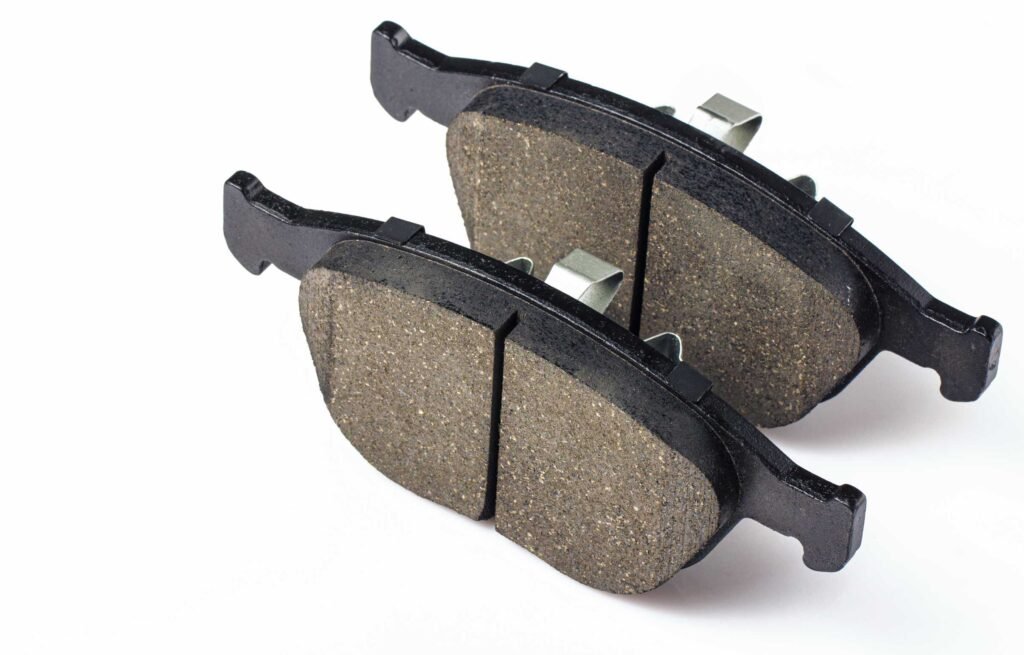Brake Pads

Can you imagine your vehicle taking time to stop after pressing the brake pedal, that too in traffic? Thanks to Frederick William Lanchester for creating Disc Brake. Disc brakes are a little more advanced than basic drum brakes as they offer better stopping performance for the vehicle. Their main purpose is the instant and quick barking of the vehicle. The majority of the current running vehicles on road are featured with disc brakes. These brakes come a little costlier than the normal brakes but succeeded in the market as they are worth it.
Brake pads are the major component of these disc brakes in recent automobiles. These are made of steel with thick friction material to halt the running rotor. Brake pads basically apply pressure on the vehicle’s rotor to stop it immediately. The effort you need to put into stopping disc brakes is significantly lower compared to regular drum brakes.
How do brake pads work?
When you apply pressure on the brake pedals, a fluid instigates the cylinder to pressure the callipers attached to brake pads through brake lines(hoses). The calliper when received a signal presses the brake pads toward the moving rotor. This creates immediate friction to stop the vehicle. The disc brake system reacts faster to the driver’s signal leading to a quicker response. In the whole process of braking, when the brake pads hit the wheel’s rotor, the kinetic energy is converted to thermal energy.
The same process repeats when you remove pressure on the brake pedal. The fluid flows back through the brake lines if you take off the pressure from the braking system and the brake pads release the motion rotors to circulate the wheels.
The other considerable functionality of disc brakes is its cooling system. When the brake pads halt a moving wheel, the waste of heat energy is released which the system needs to get rid of. Disc brakes also have a premium cooling system that eradicates the waste heat faster from the vehicle.
Recommend Read: Car Brake Maintenance Tips
When is the time to replace your brake pads?
We know that brakes are always helpful to save us from greater accidents. When our car is about to hit something, we often use the braking system to stop the car instantly. As braking systems are so important for our safety and the performance of the car, let’s have a look at a few indicators that it’s time to replace or repair your current braking pads. In general, you can replace the brake pads once done with 50000 miles but it also depends on the built quality of brake pads and driving habits.
Brake lights on: If the dashboard’s brake light comes on there may be a potential risk with the braking system. So, you need to check and repair the braking system immediately if there is an issue with it.
Vibrations in brake pedals: You sense the vibration feeling when your foot touches the broken brake pedals. So, vibration is the indication when your brake pads are thin and weak to pause the running wheels of your vehicle.
Lazy brakes: Have you ever experienced a sudden break jerking the new car forward? Newer brakes give instant replies to sudden brakes. However, used and worn-out brakes take time to stop the vehicle. Hence, you need to check them once you find that your vehicle brakes are lazy.
Squealing sounds: Annoying noises could indicate that your brake pads require immediate attention because the brake pads might be scraping against metal contact surfaces. Have a look at your braking system when you hear sounds from the pads.
Loose brake pads: If your brake pedals are loose and get pressed with very little effort then you should have a quick check in the braking system. Because minimum efforts are required to halt a moving machine that runs on friction.
Tips for long-lasting brake pads:
Maintain ideal speed: Drive at regular speed and maintain the traffic flow to avoid harsh brakes.
Give gaps: Maintain gaps between the front vehicle and the back vehicle so that you don’t need to apply sudden brakes.
Remove heavy weights: It’s difficult for a vehicle to brake when it’s loaded with heavier weights. So, don’t carry unnecessary weights with you.
Usage of gears: You should know when to use the gears of a car for better performance in the drive and braking system as well. For example, when the car is moving downhill and you use brakes continuously here then the issue of overheating might arise. Hence, also use gears to control the vehicle in downhills.
Gentle usage of brakes: Always try to give progressive brakes than sudden brakes in most situations. Initially apply light pressure on the brake and increase the pressure gradually to stop the vehicle.




















































